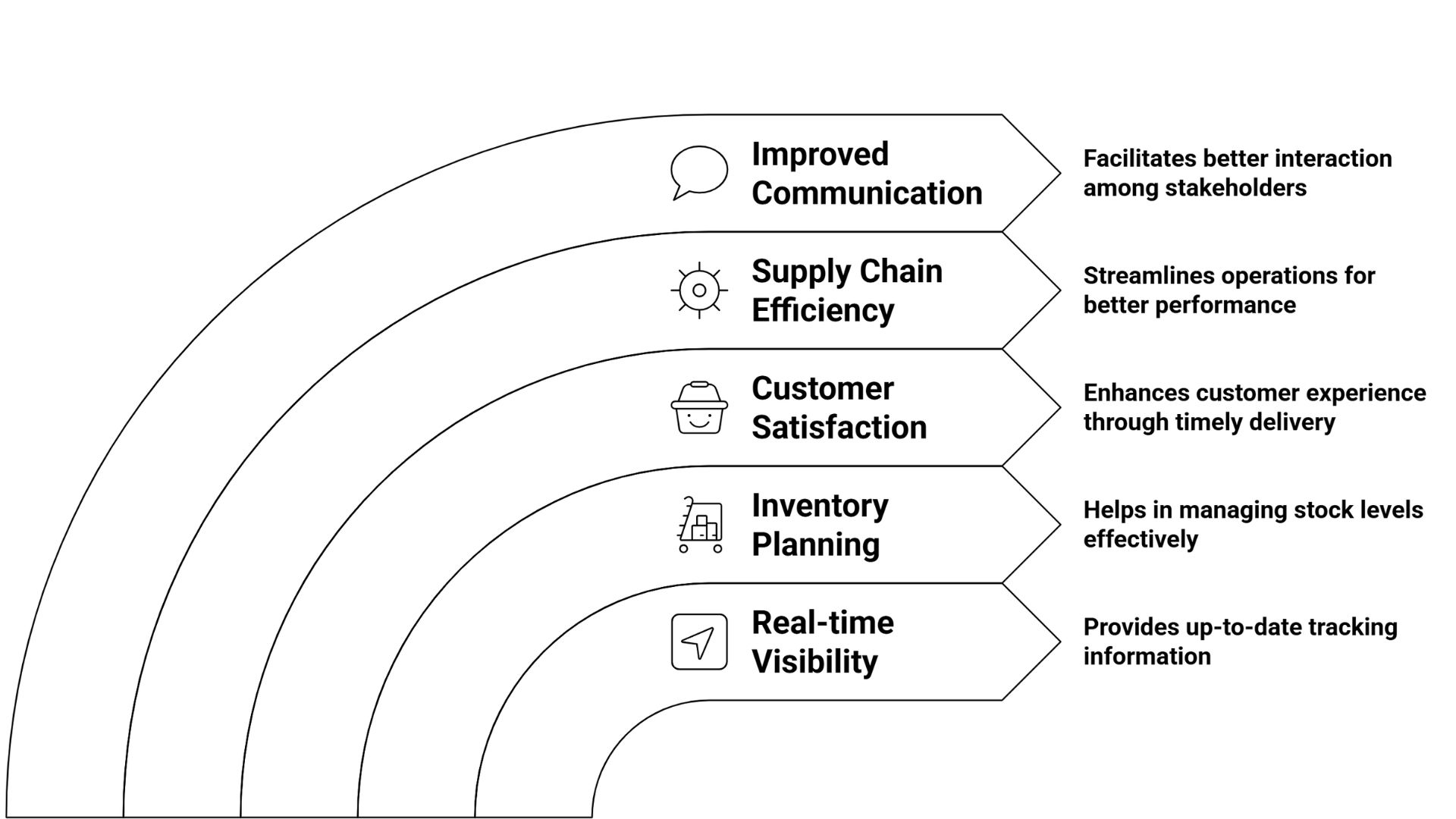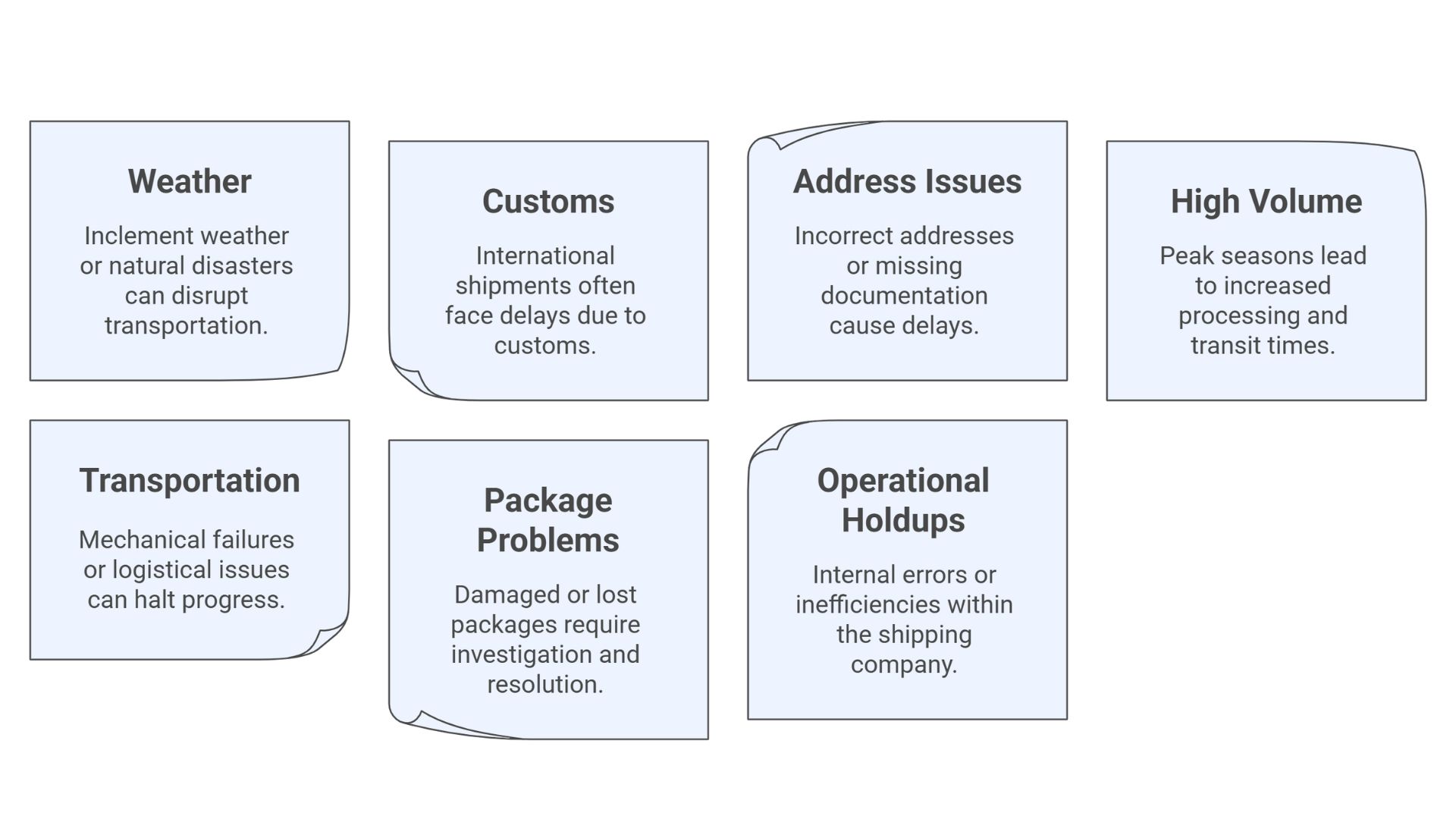
Nearly 80% of us frequently check the tracking status of our online deliveries, especially if the package has something that we have been waiting for a long time, like a new smartphone, TWS earbuds, or a gift that you brought for a birthday party. Most of the time, your package is listed as "In transit" or "en route." So what does "in transit" exactly mean?
In-transit simply specifies that the package is shipped and is on its journey from the seller's side to your front door. However, your package can stay in this "in-transit" status for several days.
So, understanding what is happening at the in-transit stage can help businesses manage their customer expectations.
Let's break down what exactly "in transit" means, the reasons why your shipment stays in in-transit status for several days, and what you can actually do about it.
What Does "In Transit" Mean?
"In transit" shows a shipping status when it ships (or leaves) from the sender but hasn't reached the final destination. It covers all kinds of shipping methods that are between shipping and final delivery.
In other words, you can say that when a package is moved via car, train, or plane, it is in "in transit" status.
What "In Transit" Means In Supply Chain And Shipping
In transport and logistics, in-transit status begins with the moment the item is shipped from the seller, and usually includes activities:
- Pickup: The logistics company picks up the package from the seller
- Sorting: Handled at a logistics hub for consolidation (if required).
- Transport: By plane, ship, train, or truck.
- Final routing: To the final delivery hub before it reaches its final destination.
Note: With international shipments, customs is also considered "in transit."
When You Can See In Transit Status Across Different Shipping?
You can see "In transit" status in every kind of transport service, whether it is domestic, international, e-commerce, or courier shipments.
However, each one includes different steps, all are listed in the table:
Difference Among In transit, Out for delivery, and Delivered
Here is the simple comparison table among in-transit, out for delivery, and delivered status:
Why In Transit Matters For Businesses, Supply Chain Managers, And Customers

The in-transit status is not just for the customers but also for all organizations that are involved in the supply chain.
1. For Businesses: Nowadays, every company uses in-transit notification. This serves two main purposes: (a) to keep costs low, and (b) to make customers happy.
For example, manufacturers track their B2B shipping to better schedule their manufacturing and production.
2. For Supply Chain Managers: Supply chain managers need the current status of shipments to avoid any chaos. In case they spot any delay, they can switch to a faster transport mode, such as air freight or reroute the shipment.
3. For Customers: Everyone would love to know where their order is and whether it is on time or not. Customers feel happy seeing their package leave the warehouse and soon reach them.
6 Common Scenarios When You'll Be Using "In Transit"
1. Long-Distance Shipping: If your package moves from states or countries, it will remain "in transit" for a few days.
2. Weekend and Holiday Delays: Some couriers (such as the Indian Post Office) hardly deliver packages on public holidays or Sundays. Your parcel simply remains "in transit" until working resumes normally.
3. Multi-stop Routes: If your shipment goes through various transport and distribution centers or hubs for consolidation, then at each specific point, it only flashes "in transit" status.
4. International Shipments: If you ship overseas, your packages need to go through customs checks and additional paperwork, which again increases delivery time, and in-transit status remains the same.
5. Weather-related Delays: Bad weather puts the brakes on everything, such as trucks, trains, and airplanes. This all delays the delivery time, and in between, you can only see "in transit" status.
6. Seasonal Hikes: Due to festival season sales from Amazon, Flipkart, Myntra, etc., most of the deliveries are strategically delayed to cope with the spikes in orders.
Reasons Why Does A Shipment Remain "In Transit" For So Long?

Wondering why your favorite smartphone has not been delivered yet and only shows "in transit" status for days? These are some of the reasons:
1. Weather and Natural Disaster
- Heavy rains, snow, floods, or storms reduce flights and truck speeds
- Flooding jams highways
- Extreme temperatures and heat waves lower cargo handling efficiency
2. Customs and International Processing
- Custom clearance sometimes takes ages
- Missing or wrong ship documents
- Special permits or screening documents are missing
- Customs offices closed on holidays
3. Address and Documentation Issues
- Improper or wrongful address for delivery
- Defective or missing shipping tag
- Incorrect PIN code
- Recipient information does not match with the records
4. High Volume Periods
- Diwali, New Year, and festive season sales
- Lower delivery capacity at peak hours
5. Transportation Problem
- Breakdown of trucks or other mechanical issues
- Flight cancellations or delays
- Route changes due to roadwork and construction
- Equipment failure in courier hubs
6. Package-Specific Problems
- Over-sized cargo requires special care
- Toxic and hazardous substances will require additional checks and safety measures
- Torn or damaged shipments must be rewrapped
7. Operational Holdups
- Scanning mistakes at sorting centers
- Packages are sent to the wrong location
- Fewer staff at distribution centers
What can you do When Your Shipment Gets Stuck In Transit?
Your packages can be stuck "in transit" for more than 2-5 days in domestic shipping, and 2-3 weeks in international shipping. However, if this time window passes, you should take the following steps:
1. Try these first:
- Make sure your tracking number is correct. There might be a typo error.
- Check the estimated delivery date. There might be a case where your package is rescheduled.
2. Call the right people: Get in touch with sellers or e-commerce executives. They raise complaints and resolve faster than you. Ask them the reasons for the delay.
3. Wait and Act: Resolving the issue generally takes up to 48 hours. So, wait for two more days, and again call the customer executives and ask for the delay. You can also ask them for a refund in case you don't need the product now.
4. Use improved tracking tools: Most e-commerce sites use 3rd party logistic services that offer a different tracking code. You can use that tracking code and check the current status of the logistic service provider or contact them directly.
5. Maintain records: Save copies of tracking details and any communication or emails with the seller. This will help raise complaints and claim a refund.
Tools & Technologies Simplifying In-Transit Visibility
Here are some of the tools and technologies that simplify in-transit visibility:
1. Transportation Management Systems (TMS): It facilitates tracking multiple shipments in a single dashboard with automatic alerts for delays, and seamlessly connects different carriers under one roof.
2. Integrated Technologies: Real-time tracking with GPS, mobile alerts for instant updates, temperature, and humidity monitoring of shipments.
3. Cloud-Based Analytics: GPS, tags, scanners, and mobile apps are used to produce analytical reports to improve logistics efficiencies.
So, if you're looking for a transport company that offers complete visibility with detailed, real-time tracking instead of just "in transit" status, contact us now.


